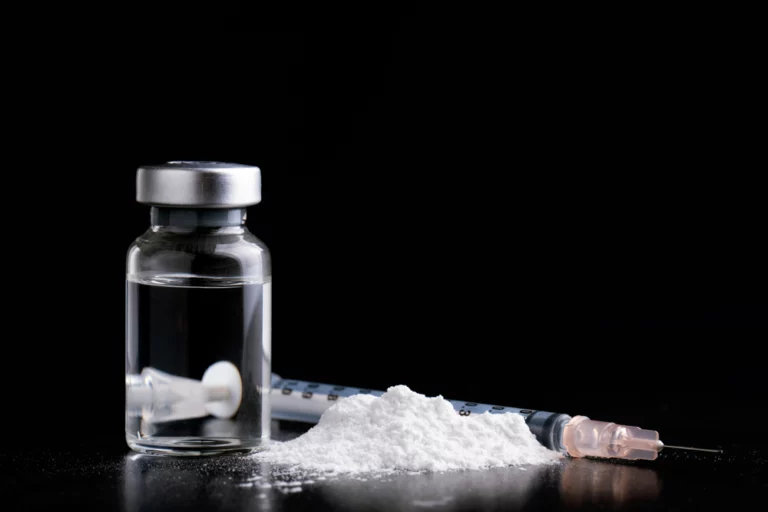Methamphetamine (meth) and crack cocaine are two of the most potent and highly addictive stimulants frequently misused today, yet they differ significantly in their chemical composition, effects, and societal consequences.
Recognizing the difference between meth and crack is essential for healthcare professionals, law enforcement, and the general public to address addiction, health risks, and crime effectively.
While both substances produce intense euphoria and energy, the difference between meth and crack lies in their production methods, duration of effects, and long-term health implications. Meth, a synthetic drug, typically leads to prolonged stimulation, whereas crack, a derivative of cocaine, delivers a shorter but more intense high.
Understanding the difference between meth and crack can also help in tailoring prevention and treatment strategies, as each drug demands a unique approach to recovery. This guide delves deeper into their distinct properties, similarities, dangers, and the broader societal impact of these substances, providing crucial insights for those affected by or working to combat their misuse.

Overview of Meth and Crack
What is Meth?
Methamphetamine, commonly known as meth, is a powerful synthetic stimulant that affects the central nervous system. Unlike crack, which is derived from the coca plant, meth is manufactured in illegal labs using harsh chemicals, resulting in a highly addictive and long-lasting high. One key difference between meth and crack is their chemical structure—meth is an amphetamine, while crack is a form of cocaine.
Meth produces prolonged euphoria, increased energy, and heightened alertness, often lasting for hours or even days, whereas crack delivers a much shorter, more intense rush. Another major difference between meth and crack is their method of use; meth can be smoked, snorted, injected, or swallowed, while crack is typically smoked.
Understanding the difference between meth and crack is critical, as meth’s extended high and neurotoxic effects can lead to severe physical and mental health deterioration, including psychosis, tooth decay (“meth mouth”), and extreme weight loss. By recognizing these distinctions, individuals can better comprehend the unique dangers associated with each drug.
A Quick Breakdown
- Chemical Composition and Use: Methamphetamine is a potent central nervous system stimulant often manufactured illegally. It appears as a crystalline powder or in crystal form known as “crystal meth.”
- Method of Use: Meth can be ingested orally, snorted, injected, or smoked. This versatility contributes to its widespread misuse.
- Effects on the Body: Meth stimulates excessive dopamine release in the brain, creating intense euphoria, increased energy, and alertness, but can lead to severe side effects and potential addiction.
What is Crack?
Crack is a highly addictive, freebase form of cocaine that is processed into rock crystals and typically smoked for an intense, immediate high. One of the most notable differences between meth and crack is their origin—crack is derived from the coca plant, while meth is a completely synthetic drug. Another key difference between meth and crack is the duration of their effects; crack produces an extremely short but powerful rush lasting just 5-10 minutes, whereas meth’s high can persist for hours.
The difference between meth and crack is also evident in their methods of use—crack is almost exclusively smoked, while meth can be consumed in multiple ways, including injection and snorting. Additionally, the difference between meth and crack extends to their withdrawal symptoms; crack crashes are marked by severe depression and fatigue, while meth comedowns often involve prolonged exhaustion and psychological distress.
Understanding these distinctions helps highlight why crack is known for its rapid addiction cycle, as users chase repeated highs to avoid crushing lows. Recognizing the difference between meth and crack is crucial for addressing their unique risks and tailoring effective treatment approaches.
A Quick Breakdown
- Origins and Preparation: Crack is a form of cocaine processed to form a rock crystal that’s typically smoked. This form allows the drug to reach the brain rapidly, creating an intense, short-lived high.
- Method of Use: Crack is primarily smoked, resulting in a rapid onset of effects, leading to its high potential for addiction.
- Effects on the Body: Crack affects the brain’s reward system, producing a short-lived, intense high followed by a profound crash, often accompanied by cravings.
Key Differences Between Meth and Crack
Chemical and Physical Form Differences
- Composition: While both are stimulants, meth is synthetic, and crack derives from the coca plant. Meth appears as a powder or crystal, whereas crack is a solid, rock-like substance.
- Duration and Intensity of Effects: Meth typically results in a prolonged high, while crack induces a brief but intense high, prompting repeated use.
Health Risks and Side Effects
- Long-term Impact: Meth use can lead to severe dental problems, skin sores, and weight loss. Crack use often results in cardiovascular issues, respiratory problems, and severe mental health conditions.
- Addiction Potential: Both substances have a high potential for addiction, but crack’s rapid onset can increase its frequency of use.

Local Impact: Meth and Crack Use in Knoxville, TN
Community and Societal Challenges
The widespread misuse of meth and crack creates profound challenges for communities and society at large, though the difference between meth and crack leads to distinct social consequences.
One key difference between meth and crack is their impact on crime rates—meth production often fuels hazardous labs and chemical dumping, while crack distribution is frequently tied to violent street-level drug trade. Another difference between meth and crack appears in their effects on public health systems; meth addiction tends to result in long-term psychiatric care needs due to psychosis, while crack addiction places heavy burdens on emergency services from overdoses and cardiovascular crises.
The difference between meth and crack also influences homelessness patterns, with meth users more likely to experience prolonged mental deterioration and crack users facing cyclical instability due to the drug’s short, intense highs. Understanding the difference between meth and crack helps policymakers develop targeted interventions, as meth epidemics often devastate rural areas while crack historically impacts urban centers.
By addressing these substances’ unique societal footprints, communities can better allocate resources for prevention, treatment, and harm reduction strategies that reflect the critical difference between meth and crack.
- Crime and Public Safety: Both meth and crack pose significant challenges to public safety in Knoxville, often linked with crime and community welfare deterioration.
- Healthcare Resources: These drugs can strain local healthcare systems due to the need for emergency response, medical treatment, and rehabilitation services.
Efforts to Combat Use
Addressing the devastating impact of meth and crack requires tailored strategies that account for the critical difference between meth and crack in terms of addiction patterns and user demographics. Law enforcement approaches highlight a key difference between meth and crack—meth production demands targeting clandestine labs and precursor chemical supplies, while crack distribution calls for focused efforts on disrupting street-level drug markets.
Treatment programs also reflect the difference between meth and crack, with meth addiction often requiring longer-term mental health support for psychosis and cognitive damage, whereas crack addiction benefits from intensive behavioral therapies to break the cycle of compulsive use.
Public health campaigns emphasize the difference between meth and crack through distinct messaging—meth warnings focus on physical deterioration and paranoia, while crack alerts highlight cardiac risks and rapid addiction potential.
Harm reduction services further demonstrate the difference between meth and crack by distributing specific supplies like crack pipes to prevent infections versus meth testing kits to detect dangerous adulterants. By recognizing these fundamental differences, communities can implement more effective, substance-specific policies that address the unique challenges posed by each drug while maximizing limited resources in the fight against stimulant abuse.
- Local Initiatives: Knoxville has implemented various programs aimed at prevention, education, and recovery support for those affected by meth and crack addiction.
- Recovery Services: Facilities like the Knoxville Recovery Center offer essential rehabilitation services and support programs to help individuals overcome addiction.

FAQs: Understanding the Difference Between Meth and Crack
What are the main differences between meth and crack?
The main differences lie in their chemical composition, form, and duration of effects. Meth is a synthetic compound, while crack is derived from cocaine. Meth produces longer-lasting effects compared to crack’s short-lived high.
How can meth and crack use impact health?
Both drugs are highly addictive and can cause severe physical and mental health problems. Meth impacts dental health and can cause skin issues, while crack leads to cardiovascular and respiratory problems.
Are there resources in Knoxville for those struggling with meth or crack addiction?
Yes, Knoxville, TN, offers a range of resources, including rehabilitation centers like the Knoxville Recovery Center, which provide comprehensive support for those dealing with addiction.
Making Informed Choices
Grasping the critical difference between meth and crack is essential for making informed choices about substance use and seeking appropriate help when needed. While both drugs are powerful stimulants with high addiction potential, the difference between meth and crack becomes evident in their chemical makeup, effects on the body, and associated risks.
Methamphetamine (meth) is a synthetic drug that creates a long-lasting high, often leading to severe psychological dependence and physical deterioration, while crack cocaine provides an intense but short-lived rush that frequently results in compulsive, repeated use. Recognizing this difference between meth and crack can help individuals understand why each substance requires specific treatment approaches and intervention strategies.
The difference between meth and crack also extends to their health consequences. Meth use often leads to extreme weight loss, dental problems (“meth mouth”), and prolonged psychosis, whereas crack use typically causes cardiovascular strain, respiratory issues, and heightened aggression.
Being aware of this difference between meth and crack allows healthcare providers to tailor detox and rehabilitation plans to address each drug’s unique withdrawal symptoms and recovery challenges. Additionally, the difference between meth and crack influences relapse prevention strategies—meth users may need extended mental health support, while crack users often benefit from structured behavioral therapy to break the cycle of cravings.

If you or a loved one is struggling with meth or crack addiction, it’s crucial to seek professional assistance immediately. The difference between meth and crack means that treatment must be customized to ensure the best possible recovery outcomes.
At Knoxville Recovery Center, our experienced team understands these distinctions and provides evidence-based treatment programs designed to address the specific needs of meth and crack users. Whether you require medical detox, counseling, or long-term aftercare, we offer compassionate support every step of the way.
Don’t wait to take control of your health and future. Contact us or call Knoxville Recovery Center today at 865-830-3967 to speak with an addiction specialist and explore the treatment options available. Understanding the difference between meth and crack is the first step—taking action is the next. Reach out now and begin your journey toward lasting recovery.








